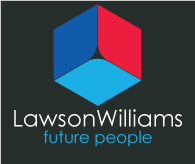Survive to 2025 – Then What? A look at the Employment Market.
Reflecting on 36 years in recruitment, John Lawson has witnessed four recessions, each teaching valuable lessons.
One of the most important? The market is always cyclical, prepare in the good times to survive the bad.
It’s hard to say if this recession is the worst—economists suggest we haven’t hit bottom yet.
While the promise of lower inflation and decreasing interest rates offers hope, consumer confidence remains low, and job security is a growing concern.
Businesses are navigating restructures, seeking to reduce labour costs. At the same time, they are looking for productivity gains through technology and automation.
They are also facing the challenge of planning for the future while seeing many of our best and brightest head out of New Zealand.
What our clients are saying. 3 common themes.
We sit in a privileged position alongside a wide range of businesses.
Our clients allow us to see the good and the bad as we assist them to identify future people or support them to be understand how they can shape and position their business.
There are 3 common themes in our current conversations.
1.The Cost of Labour and Planning for the Future.
As expected, most are not recruiting unless they must. And regrettably, many see a further reduction in labour cost through restructuring to be essential for them to come through this and be able to reinvest and go again.
It does appear a reality that the increase in consumer confidence we are all seeking will rely on people seeing a growing economy in addition to reducing inflation and interest rates.
For this growth to occur it appears we must feel the pain of further unemployment into 2025.
The challenge currently is to deal with the process of restructuring at the same time as planning for the future. What does the team need to look like in the future to meet the challenges of the future.
2.Increasing Productivity – how do we automate?

Data, Automation and Industry 4.0.
Many of our clients are looking for technology and automation answers but let’s face it, Industry 4.0 is like tackling the most complex jigsaw puzzle you’ve ever encountered.
We’re talking about every piece of modern business innovation: artificial intelligence (AI), the Internet of Things (IoT), cloud computing, big data, automation—the list goes on.
The current challenge is that no one holds all the pieces. There are simply too many moving parts. Technologies evolve, processes shift, and best practices transform faster than ever before.
It’s chaotic, but the chaos presents immense opportunities for those willing to navigate the unknown.
The challenge for many of our clients currently is to know where to invest and to understand the underlying conditions in their business that need to be addressed to maximise the return they are ideally seeking.
3.The Brain Drain – ouch, that really hurts.
More than 81, 000 New Zealanders departed long term in the year to August.
We can’t afford to keep losing skilled workers in these numbers and stay competitive.
In 2025 we are forecast to be close to net-zero migration
Despite the increase in unemployment most of our clients continue to struggle to fill specialist positions.
The smart businesses have a clear understanding of their work force. They know which positions are critical and who they need to keep. They know that now is the time to focus on creating the environment and conditions that retain employees.
HRD magazine recently reported a 60% growth in remote workers in New Zealand in 2023. We know that Hybrid work has quickly become the preferred work mode for workers and is now a key factor in attracting and retaining employees.
In conclusion.
Another lesson I have learned from managing a recruitment business through 4 recessions is that nothing stays the same, “we never return to equilibrium”. Whatever market our business is in we will need to operate differently in 2025.
In the recruitment sector the impact of technology has always taken a big step forward during the down times. Innovation and the need to work differently has driven big changes in the way we have attracted and recruited employees. This has required us to always be looking at the leading edge of technology and how it can be used, to ensure we are not left behind as we enter the next growth cycle.
The green shoots of recovery are becoming visible, but this time the increasing pace of change presents a challenge for us all to not just to Survive to 2025 but to
Survive to 2025 – and be prepared for what is different!
